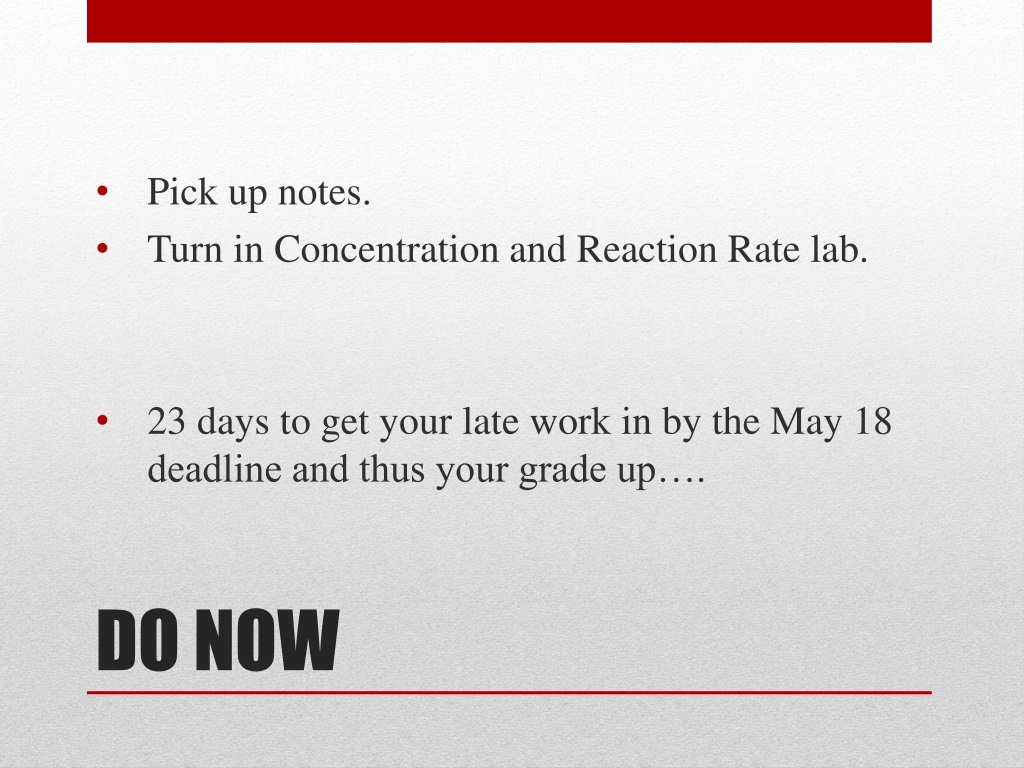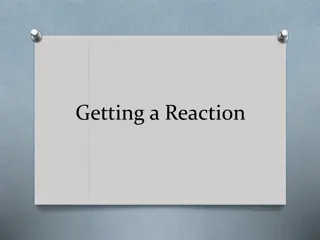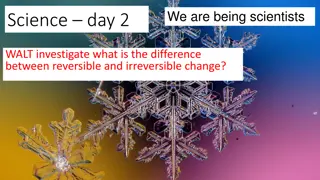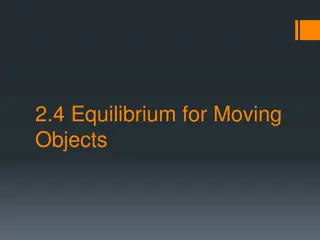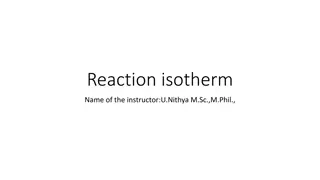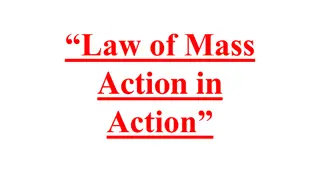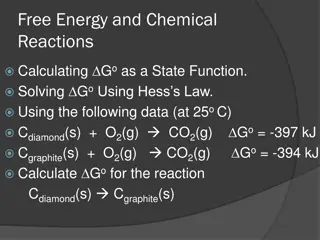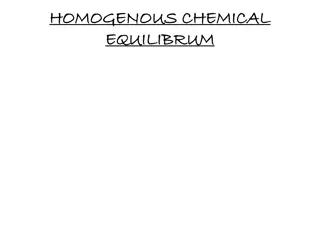Understanding Chemical Equilibrium in Reversible Reactions
Chemical equilibrium occurs when the concentrations of reactants and products remain constant over time in a reversible reaction. Reaction rate is proportional to concentration, and equilibrium is reached when the rate of formation equals the rate of consumption in both directions. Reversible reactions play a key role in maintaining equilibrium, where heat absorption and color changes may indicate shift. Understanding equilibrium dynamics is crucial in chemistry labs and tests.
Download Presentation

Please find below an Image/Link to download the presentation.
The content on the website is provided AS IS for your information and personal use only. It may not be sold, licensed, or shared on other websites without obtaining consent from the author. Download presentation by click this link. If you encounter any issues during the download, it is possible that the publisher has removed the file from their server.
E N D
Presentation Transcript
Pick up notes. Turn in Concentration and Reaction Rate lab. 23 days to get your late work in by the May 18 deadline and thus your grade up . DO NOW
UNIT 14 CHEMICAL EQUILIBRIUM
Most reactions do not go all the way to completion (meaning all the reactants are used up). Reactions can proceed in both directions. This is usually indicated by: N2O4 (g) 2 NO2 (g) double arrow A chemical reaction in which the products regenerate the original reactants is called a REVERSIBLE REACTION. REVERSIBLE REACTIONS
In theory, all reactions are reversible. Some are reversible on their own and others are reversible only under restricted conditions. Do not assume that all reactions proceed until one of the reactants is entirely consumed. GOOD TEST QUESTION! REVERSIBLE REACTIONS
Heat is absorbed when N2O4 changes into 2 NO2 molecules N2O4 (g) 2 NO2 (g) colorless red-brown DEMO
In equilibrium, it is important to remember that reaction rate is proportional to concentration. rate = [Reactants or Products] Time Reaction rate is the speed at which a reaction occurs. When the reaction goes faster, the reaction rate increases, but the actual time decreases. CHEMICAL EQUILIBRIUM
How many times have we talked about equilibrium? What are some examples? CHEMIMCAL EQUILIBRIUM
Chemical equilibrium is the state in which the concentrations of reactants and products remain constant with time. The rate at which they are formed in each reaction equals the rate at which they are consumed in the opposite direction. The concentration remains constant. CHEMICAL EQUILIBRIUM
Chemical equilibrium is a dynamic, or changing, process. But the net change in concentration is zero. REMEMBER DYNAMIC EQUILIBRIUM? Here it is again! CHEMICAL EQUILIBRIUM
Rateforward = Ratereverse CHEMICAL EQUILIBRIUM
H2 + I2 2HI When a reaction is at equilibrium, the following is true: Rateforward = Ratereverse CHEMICAL EQUILIBRIUM
H2(g) + I2(g) 2HI(g) Rateforward = Ratereverse Rateforward = Kf[H2][I2] Ratereverse = Kr[HI]2 CHEMICAL EQUILIBRIUM
By moving the rates to the same side and calling them Keq, we get: Equilibrium Constant [H2][I2] reactant Keq = [HI]2 product CHEMICAL EQUILIBRIUM
TO SUM IT ALL UP The mass action law states that if the system is at equilibrium at a given temperature, then the following ratio is a constant. aA + bB cC + dD becomes Keq = [C]c[D]d [A]a[B]b CHEMICAL EQUILIBRIUM
Keq = [C]c[D]d [A]a[B]b 1. ALWAYS products divided by reactants; 2. The coefficient becomes the exponent; 3. Brackets mean concentration. CHEMICAL EQUILIBRIUM
The Law of Chemical Equilibrium states that at a given temperature, a chemical system may reach a state in which a particular ratio of reactant and product concentrations has a constant value, Keq. Keq is the numerical value of the ratio of product concentration to reactant concentration with each concentration raised to the power corresponding to its coefficient. It is constant only at a specific temperature. If temperature changes, Keqchanges. CHEMICAL EQUILIBRIUM
Write the equilibrium expressions for the following reactions. All are gases. Start out by writing Keq= 1. 3H2(g) + N2(g) 2NH3(g) 2. SO2(g) + NO2(g) NO(g) + SO3(g) 3. FeCl3(aq) + 3KSCN(aq) 3KCl(aq) + Fe(SCN)3(s) CHEMICAL EQUILIBRIUM
RULES: Use GASES and AQUEOUS SOLUTIONS in the mass action expressions. Leave everything else out. Do not include pure solids or pure liquids in your mass action expression. The concentration of pure solids and liquids is constant and can be determined by their densities so we leave them out of the expression. If it is an aqueous solution, it is not pure, and must included CHEMICAL EQUILIBRIUM CHEMICAL EQUILIBRIUM
Experiments must be performed to determine the concentrations of reactants and products at equilibrium. To determine the value of Keq, we will use the equilibrium expression we just learned. STEPS: Balance the chemical equation. Write the equilibrium (mass action) expression. Plug in the equilibrium concentrations to solve the problem. DETERMINING A NUMERICAL DETERMINING A NUMERICAL VALUE FOR VALUE FOR K Keq eq
Table 1 Trial 1 0.0200 2 0.0300 3 Initial [R]M Initial EQ [P]M [R]M [P]M 0.0 0.0172 0.0014 4.73 0.0 0.0243 0.0028 4.74 0.0200 0.0310 0.00452 ? EQ Keq 0.0 Calculate Keq for the third trial. Use the equation: 2 R P Keq = [P] = (0.00452) = [R] 2 (0.0310)2 Keq has no units DETERMINING A DETERMINING A NUMERICAL VALUE FOR NUMERICAL VALUE FOR K Keq eq
EXAMPLE: What is the equilibrium constant for the following reaction if the equilibrium or final concentrations are [I2] = 0.302M, [H2] = 0.428M, and [HI] = 0.655M ? H2 + I2 2HI Keq = NUMERICAL VALUE FOR NUMERICAL VALUE FOR K Keq eq
SOME THINGS TO REMEMBER: 1. If Keq is small (less than one), then the reactants are favored and equilibrium is established before the product is formed. 2. If Keq is large (greater than one), then products are favored and equilibrium is established after lots of product is formed. 3. If Keq = 1, then the concentrations of the reactants and products are equal. TO REMEMBER
4. Each reaction has a unique Keq for every temperature. If the temperature changes, the Keqchanges. 5. KeqDOES NOT indicate the time it takes to reach equilibrium. It only provides information about the mixture of reactants and products at equilibrium. TO REMEMBER
Do handout for tomorrow. TO DO
